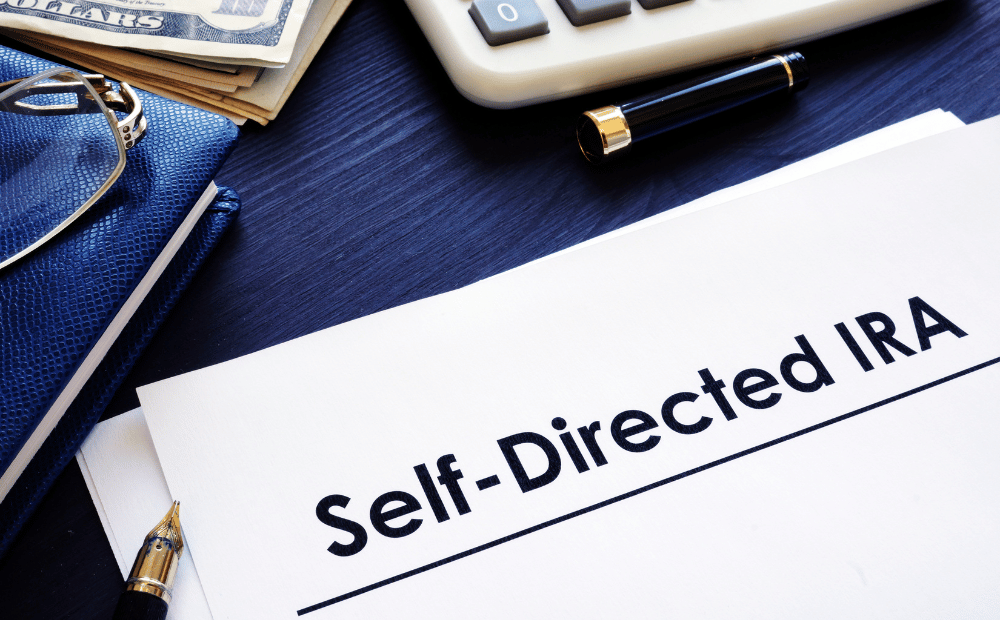Investing In Real Estate Through An SDIRA
If you’ve hung out here for a while, it’s not much of a secret that we think you should invest in real estate. We’ve written about where you should buy real estate, what kinds of real estate you can invest in, and even how to get rich with ChatGPT. (Okay, that last one is a bit of a stretch. A big stretch. You definitely shouldn’t follow investment advice from a glorified chatbot.)
But one thing we haven’t spilled much ink on is how you might go about the nuts and bolts of turning your paycheck into a real estate investment. We’re not talking about which kind of syndication you work with. That’s a different question. No, today we’re talking about a vehicle you can use on your end to get the most bang for your real estate buck.
Hang on, what’s an SDIRA again?
Good question, dear reader. SDIRA just stands for “self-directed IRA.” And “IRA” stands for “individual retirement account.” Turns out real estate is a pretty common way to save for retirement. And IRAs are among the most popular places to put money you’re saving up for use during retirement. That makes sense: while there’s lots of kinds of IRAs, the common theme is that you’ll usually pay less taxes on money you keep in an IRA. Some IRAs do that by deferring taxes, and others require you to pay taxes on the front end but make your investment returns tax deductible. While the finer points of IRAs really aren’t the point of this article, the takeaway is: less taxes good.
There’s just one problem with all that: you can’t use the money in a traditional IRA to invest in real estate. Bummer, right? Traditional retirement accounts work great for traditional investments like stocks, bonds, ETFs, etc. But they’re not great for alternative investments like rare whisky, troll doll collections, or real estate. For those, you’ll want the self-directed IRA. SDIRAs come with the tax benefits of regular IRAs, but they give you a lot more freedom about the kinds of assets you want to invest in. The catch is the “self-directed” part. When you open an SDIRA, you have to decide what to buy—which can be daunting.
So, should I invest in real estate with an SDIRA?
It’s easier than you might think. With an SDIRA, you have to choose where to put your money. And you can’t just rely on an investment advisor to make all your picks for you.
Except that you kind of can. Let’s review the various ways to invest in real estate. The simplest, but probably most labor-intensive, way to do it is: buy some property. Problem with that is: it’s basically a full-time job, and unless you have a ton of money to invest, you’re not going to benefit from any economies of scale. The easier, more popular way to do it is through entities like private equity and REITs. When you buy into a REIT or private equity fund, you give a fund manager your cash and trust the manager to buy and operate real estate. Then you get a cut of the earnings in the mail.
And you can use an SDIRA to buy into a REIT or private equity fund. When you do, you get the best of both worlds: tax-advantaged retirement investments in a great alternative asset class that you don’t have to manage yourself.
While you can get strong returns on traditional investments with a non-self-directed IRA, there’s good reasons to invest in real estate through an SDIRA at the same time. First, diversification is a big plus—especially in an account you’ll draw from during retirement. If the stock market tanks, you’ll be happy you can keep earning returns on more crash-resistant assets (like, cough, real estate) while you wait for the market to get seaworthy again. Second, self-direction is great for retirement planning because it allows you to pick investments that match your unique financial goals. Especially in the world of boutique private equity real estate funds, you can pretty much guarantee there’s a fund out there that fits your goals—no matter what they are. Last, IRAs are a no-brainer in general. While we think investing in real estate is always a good bet, paying less tax on your returns is pretty sweet icing for the cake.
Conclusion
The bottom line’s pretty simple here: Real estate is great. Paying less tax is great. And waiting to save for retirement is pretty universally regarded as a bad move. Investing in real estate syndications via an SDIRA gives you the best of both worlds—tax advantages plus the excellent returns, diversification, and recession resistance of real estate. And we’d be remiss if we didn’t coyly point out that Reiturn LPs can invest through SDIRAs . . .




